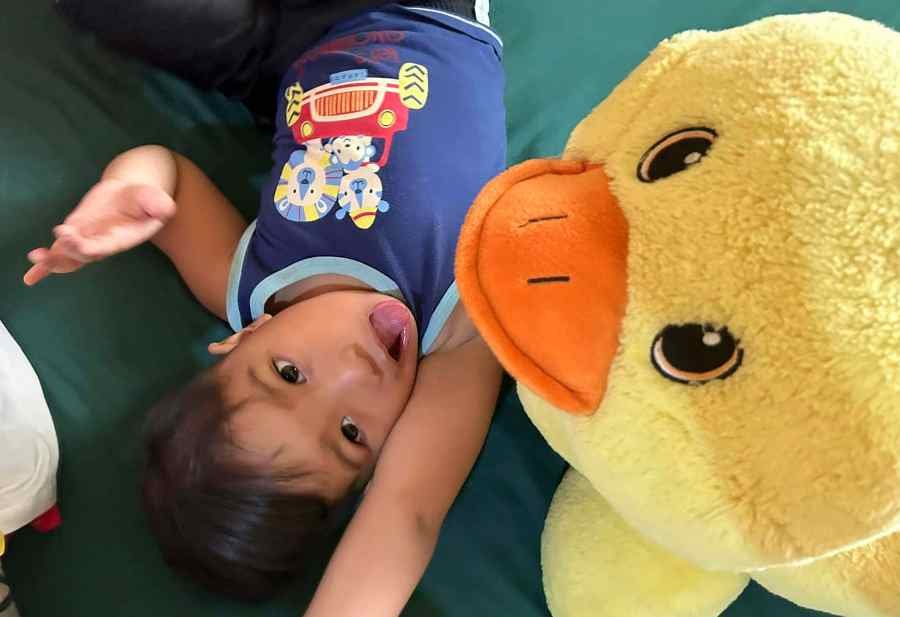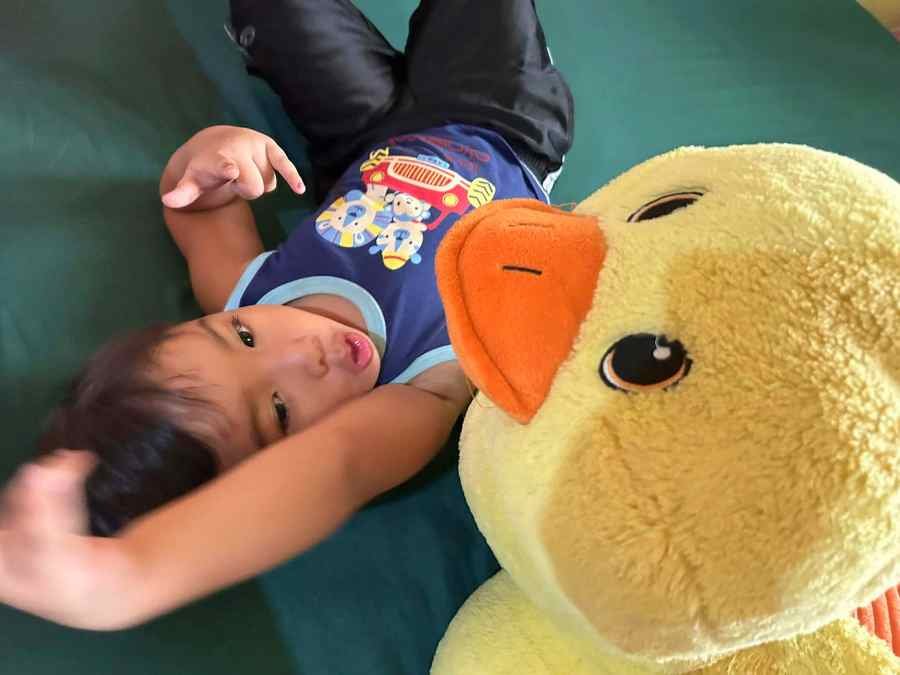Engaging Your Hyperactive Toddler: Effective Strategies for Keeping Them Happy and Busy
As a mother, I understand the challenges of having a hyperactive 2-year-old toddler. It can be overwhelming when their older sibling, like Abby, is away at school, leaving Enzo as the sole explorer at home. In this blog post, I will share evidence-based tips and activities to keep your energetic toddler engaged, and entertained, and promote their development. These strategies are supported by research in child psychology and aim to provide a nurturing and stimulating environment for your little one.
Activities for Hyperactive Toddler
- Encourage Physical Activities:
Physical activities play a crucial role in channeling your toddler’s boundless energy and fostering their development. Engaging your child in age-appropriate exercises not only helps burn off excess energy but also promotes gross motor skills development. According to a study published in the Journal of Motor Learning and Development (Gabbard, 2019), active play improves coordination, balance, and overall physical fitness in toddlers.
You can try activities such as dancing, playing catch, or setting up an indoor obstacle course using pillows, cushions, and soft toys. These activities not only provide an outlet for your child’s energy but also enhance their coordination and motor skills.
- Sensory Play:
Sensory play is an excellent way to captivate your toddler’s attention and stimulate their senses. Creating a sensory bin filled with various textured materials like rice, sand, or water beads can provide hours of exploration and entertainment. Research conducted by Dr. Carla Hannaford, a renowned expert in child development, suggests that sensory play promotes sensory integration, cognitive development, and emotional regulation in young children (Hannaford, 2005).
To enhance the sensory experience, you can add safe objects for exploration, such as plastic animals or toys with different textures. This type of play allows your child to engage their senses, develop fine motor skills, and foster cognitive growth.

- Interactive Storytime:
Reading to your child is not only a wonderful bonding activity but also a valuable tool for their development. Interactive storytime can help captivate your toddler’s attention and improve their language skills. Choose books with vibrant illustrations, simple narratives, and interactive elements like lift-the-flap or touch-and-feel features.
According to a study published in the Journal of Child Language (Justice, Skibbe, & McBride-Chang, 2004), interactive reading promotes language development, vocabulary acquisition, and early literacy skills in toddlers. Encourage your child to participate by asking questions, pointing at pictures, or turning the pages. This interactive engagement fosters their imagination, attention span, and love for books.
- Creative Art Projects:
Engaging your hyperactive toddler in creative art projects can provide an outlet for their energy while promoting self-expression and fine motor skills. Set up a designated art area with washable paints, crayons, markers, and paper. Encourage your child to explore their creativity through painting, drawing, or engaging in simple crafts.
Research published in the Journal of Experimental Child Psychology (Finkbeiner, 2016) suggests that art activities enhance cognitive development, spatial awareness, and problem-solving skills in young children. Allow your toddler to experiment with different colors, shapes, and textures, fostering their imagination and artistic abilities.

- Music and Dance:
Music is a powerful tool for engaging and calming hyperactive toddlers. Playing their favorite songs or introducing them to different musical genres can stimulate their auditory senses and promote emotional expression. Encourage your child to dance, clap, or play with child-friendly musical instruments like drums or xylophones.
According to the Psychology of Music (Hallam, 2010), musical activities enhance coordination, rhythm perception, and emotional regulation in young children. Sing along with your child, engage in rhythmic movements, and create a joyous musical atmosphere at home.
Conclusion:
Having a hyperactive 2-year-old toddler like Enzo can be challenging, but with the right strategies and activities, you can provide a stimulating and enjoyable environment for them. Incorporating physical activities, sensory play, interactive storytime, creative art projects, and music into your daily routine can keep your little one engaged and promote their holistic development.
Remember that every child is unique, so be patient and adapt these tips to suit your child’s interests and abilities. Embrace this energetic phase of their life, knowing that you are laying the foundation for their growth and well-being.
By implementing these evidence-based strategies, you can create a nurturing and enriching environment that supports your hyperactive toddler’s development and helps them thrive.

References:
Gabbard, C. (2019). Motor Learning and Development. Jones & Bartlett Learning.
Hannaford, C. (2005). Smart Moves: Why Learning Is Not All in Your Head. Great River Books.
Justice, L. M., Skibbe, L. E., & McBride-Chang, C. (2004). Examination of the Language-Related Predictors of Third-Grade Reading Outcomes. Journal of Child Language, 31(4), 843-862.
Hallam, S. (2010). The Power of Music: Its Impact on the Intellectual, Social, and Personal Development of Children and Young People. International Journal of Music Education, 28(3), 269-289.
More Stories
- Apples Benefits for Babies and Kids | Malus Domestica
- Sibling Rivalry | Causes and Handling Tips
- Peanut Butter Health Benefits for Kids
- Fiber-Rich Foods for Kids
- GENERATION ALPHA | The COVID – 19 Aftermath
- Health Benefits of Strawberries | Fragaria ananassa For the Growing Kids
- Vitamin A Rich Foods for Kids ( Retinol ): Ultimate Food Sources
- Health Benefits of Mango Fruit for Kids | Mangifera indica
- Introducing Filipino Food Culture to the New Generation with Quan’s Filipino Kakanin
- Newborn Baby Care The Beginning of Parenthood





Recent Comments